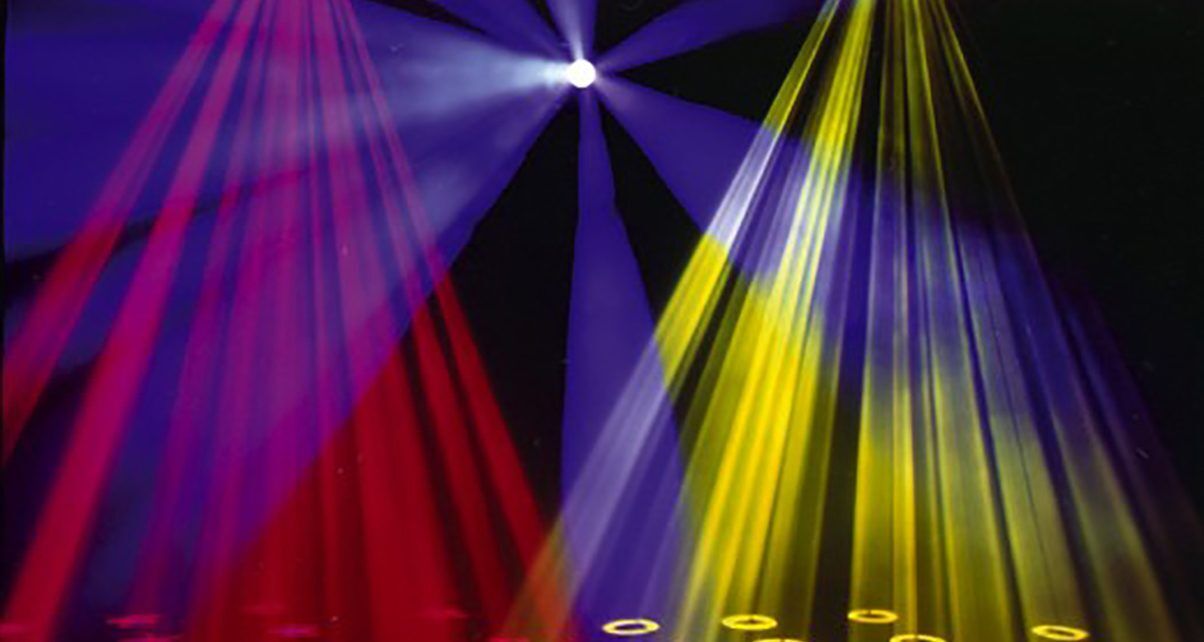In Lighting: A Guide For DJs, Part 1, we made the case for knowing your stuff when it comes to lighting, and introduced the idea of “intelligent” lighting. Now in this part, we dive into the world of DMX. It may seem a complex subject on first read, but persevere: A DJ or VJ should always have full control of what is going on, and only DMX will enable you to have total control over your lights.
As a reminder, this guide is separated into this written guide and a video. The video is a hands-on guide that shows you elements mentioned in the written part, so please read this whole section before diving into the video, which appears at the end.
What is DMX?
DMX512 (Digital MultipleX) is a standard for digital communication networks that are commonly used to control stage lighting and effects. It was originally intended as a standardised method for controlling light dimmers, which, prior to DMX512, had employed various incompatible proprietary protocols. It soon became the primary method for linking controllers to dimmers and special effects devices such as fog machines and intelligent lights. DMX has also expanded to uses in non-theatrical interior and architectural lighting, at scales ranging from strings of Christmas lights to electronic billboards. (Well, that’s what Wikipedia says… )
So there’s the background. From a DJ’s point of view, what that means is that DMX is used to communicate to lights in a standardised matter. So no matter what manufacturer your lights or DMX controller are from, as long as they are compatible with DMX they will work together. Think of it as “Midi for lighting”.
Now, the second very important thing to note is that DMX is a “bus” system. This means that you do not need cables running from your DMX controller to each and every light. Only one cable is needed from the controller to the first light, then you go from the first light into the next one and so on. So simply put:
Controller -> Light 1 -> Light 2 -> Light 3 -> etc.
DMX uses standard XLR cables, which you can get in many shops and which you may well know from our PA system or even DJ controller. In many cases even XLR microphone cables will work, however if you are running lots of lights, I recommend getting special light XLR cables.
(By the way, you may encounter on rare occasions lights that need a five-pin XLR cable. I try to avoid these as the five-pin XLR connectors are rare and hence expensive to get.)
Get the address
For each light to know when it is its time to be controlled, it needs an “address”. This is because basically all lights get all the information, and so they need to know which information is for them. The addressing schema for DMX is really simple. For example if your first light can be controlled via 16 channels and your give it address “001” then the next light needs to be at address “017” (16 channels later). If this uses 16 channels again the third light needs to be at channel “33” and so on.
Most new lights, like the ones from ADJ we use in our video, have an LED screen where you can simply adjust the address by pushing the designated buttons. Some older lights use dip switches that are binary encoded. To know which dip switch to put in the on position for the address you need, ADJ has a simple table for you here. Hence in my above example if I wanted my second light to have channel “017” I would need the dip switches 1 and 5 to be in the ON position and all others in OFF. It’s a little bit more hassle as you need to check the table for tuning the address, but you can simply print out the chart before you set up.
And this is basically it. No magic and not as complicated as many may wish you to think. If you understand the basics of daisychaining the lights with XLR cables and the need for each light to have an address, you are ready to go on and watch the hands-on stuff in this week’s video.
One bit of advice at the end: If you are using a lot of lights and you get a lot of XLR cable length you might need to use a so-called “DMX terminator” on the last light. That terminator is a simple DMX plug with a resistor in it, so you get less signal loss when daisychaining so many lights. You can get such a DMX terminator from most stores that sell you XLR cables or lighting gear. I always have a few in my “tech case” and I recommend you have at least one.
Video
Next time…
Next week we’ll look at how to programme your light show. I’ll also give you advice on how to choose lighting gear, should you be in the market for owning some lights of your own (rather than just understanding that esoteric lighting desk in your local DJ booth!).
• A veteran DJ and Digital DJ Tips’s resident PA and lighting specialist, Terry can also be found moderating the Digital DJ Tips Forum.
Check out the other parts in this series:
Got questions, queries or comments to do with lighting, DMX, cables, daisychaining, or anything else to do with setting up lighting? Feel free to ask away in the comments.


